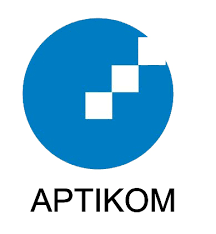Ajax Based Exam Engine with Tagging System to Improve Learning
DOI:
https://doi.org/10.18196/eist.113Keywords:
Exam engine, Tagging System, AJAXAbstract
In this paper, we propose exam engine software with tagging system to help students’ study. With this tagging system, they can analyze their subject learning through exam they have done from time to time. When the students see their reports, the students will decide which subjects are low in grade and should be re-studied. We use AJAX technology to enrich the user experience of this exam engine. After we test all feature with unit testing, this exam engine is proven to runs well and do benefits for students.
References
J. Galloway, P. Haack, B. Wilson, K. S. Allen, and S. Hanselman, “Professional ASP.NET MVC 4,” in Professional ASP.NET MVC 4, 2012.
J. Kluge, F. Kargl, and M. Weber, “The effects of the ajax technology on web application usability,” Webist 2007 - 3rd Int. Conf. Web Inf. Syst. Technol. Proc., vol. WIA, no. May, pp. 289–294, 2007.
Y. P. Jin, Y. Liu, and G. Song, “Design and research of teaching resources management based on SSH and AJAX,” Proc. - 8th Int. Conf. Internet Comput. Sci. Eng. ICICSE 2015, pp. 279–285, 2016.
A. Shaw, “Teaching students to design and implement social networks using MVC as a capstone experience,” Proc. 2013 10th Int. Conf. Inf. Technol. New Gener. ITNG 2013, pp. 747–748, 2013.
J. Ou, Yun-Pei, X. B. Bai, and Q. X. Wu, “Interactive platform of project-teaching based on AJAX,” 2011 IEEE 3rd Int. Conf. Commun. Softw. Networks, ICCSN 2011, pp. 352–354, 2011.
M. Allahyari and K. Kochut, “Semantic Tagging Using Topic Models Exploiting Wikipedia Category Network,” Proc. - 2016 IEEE 10th Int. Conf. Semant. Comput. ICSC 2016, pp. 63–70, 2016.
P. Runeson, “A survey of unit testing practices,” IEEE Softw., vol. 23, no. 4, pp. 22–29, 2006.
Microsoft, “Testing Tools.” [Online]. Available: https://www.visualstudio.com/vs/testing-tools/. [Accessed: 12-Jul-2017].



